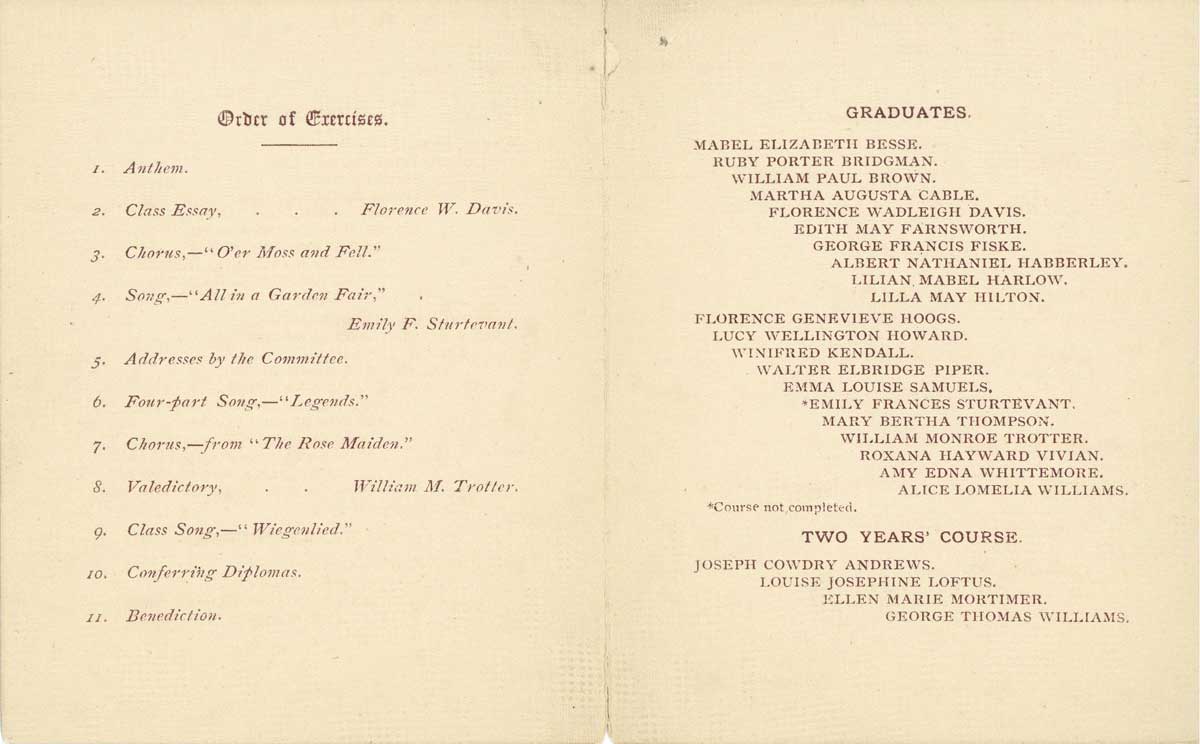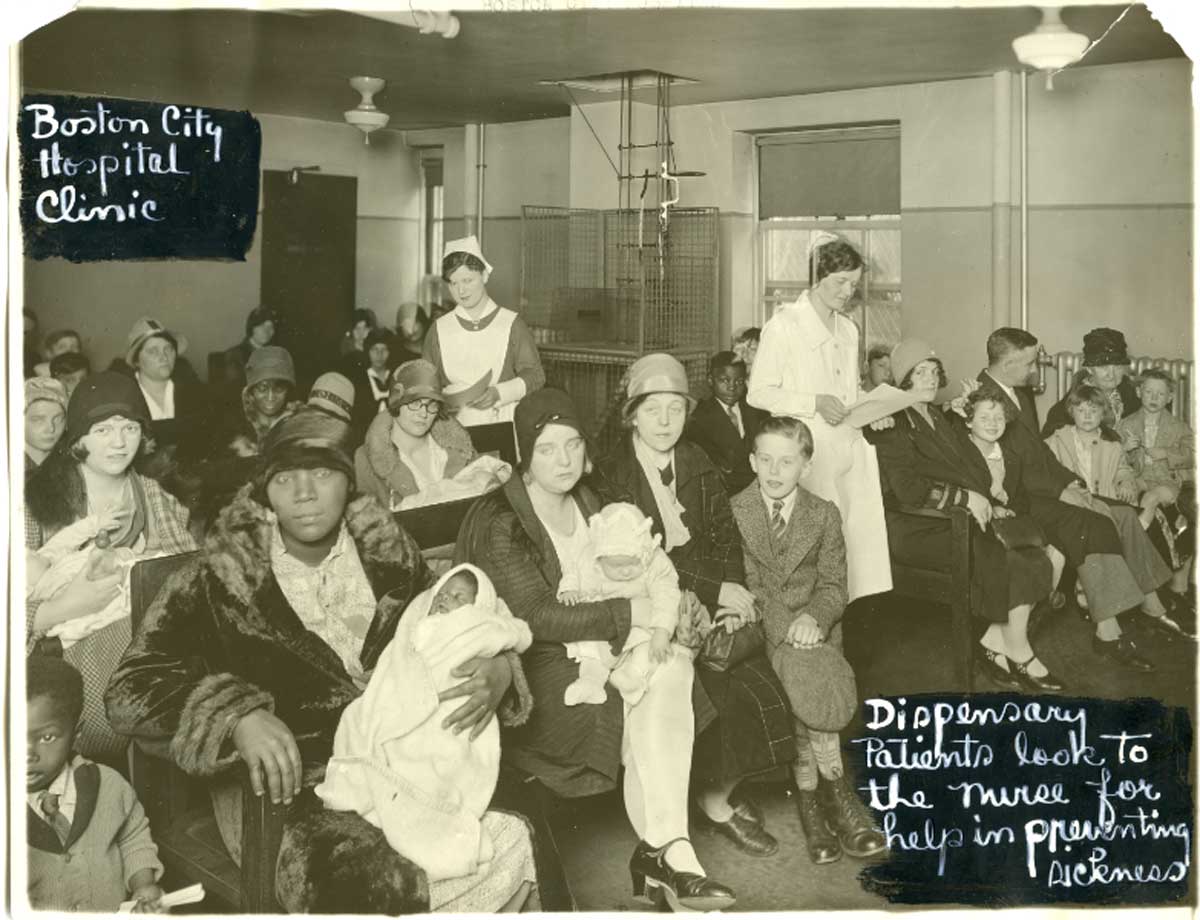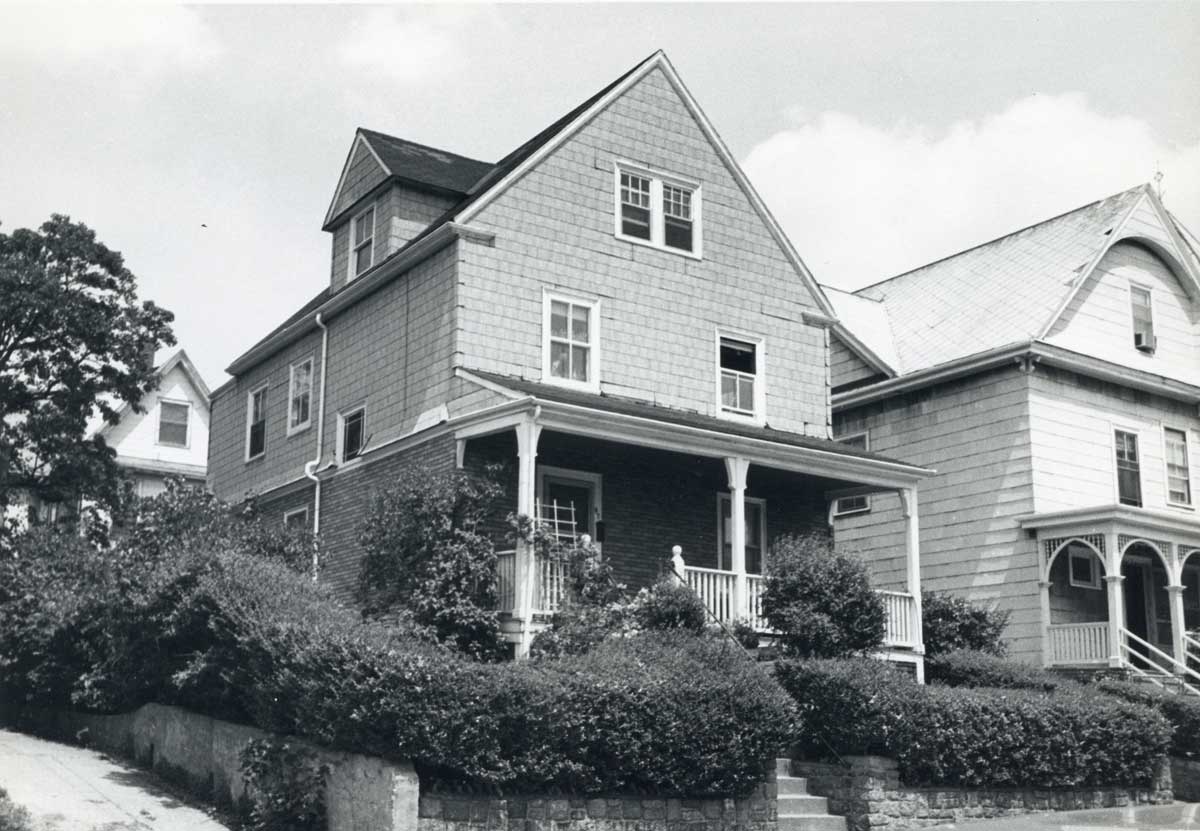William Monroe Trotter: newspaper publisher, activist — and Hyde Park native!
William Monroe Trotter was a businessman, newspaper publisher, and civil rights activist who grew up in Boston’s Hyde Park.
William Monroe Trotter was born in 1872 and lived in Hyde Park. He attended Hyde Park High School, which at the time, was a predominately white school. The 1890 graduation exercises below show that he gave the valedictory address to his fellow classmates.
After high school, Trotter attended Harvard University, where he became the first man of color to receive a Phi Beta Kappa. After leaving Harvard, he opened his own business. He also founded the independent African American newspaper, the Boston Guardian, and began speaking out against the racial inequality that he saw in his city. Trotter noticed that Boston was becoming more segregated, rather than less. He began working to counteract this segregation.
Trotter advocated for more activism in the African American community, and frequently butted heads with another African American leader, Booker T. Washington. Though both men sought to advance civil rights for African Americans, Trotter strongly disagreed with Washington’s methods and publicly advocated for more confrontational tactics in the fight for racial justice.
Trotter openly confronted the racial injustices that he saw in both the local and national contexts.
In 1910, Dr. Cornelius Garland, a black physician, attempted to create an all black hospital in Boston’s South End. Trotter opposed Garland’s efforts, and used his newspaper, The Guardian to advocate against Garland’s hospital. .Rather than opening an all black hospital, Trotter believed the city’s white hospitals should be integrated. He worked with a group of black doctors to advocate for the integration of Boston’s existing hospitals, including Boston City Hospital. His efforts succeeded in 1929, when the group exposed discrimination and segregation at Boston City Hospital, and the hospital decided to integrate. In 1929, the hospital admitted its first black nursing students and three years later, the hospital admitted its first black interns.
On the national stage, Trotter advocated for the integration of the federal workforce. In 1912, Trotter supported candidate Woodrow Wilson for President. When Wilson won the presidency and decided to segregate federal offices, Trotter met with him twice to argue against segregating the federal government. Though Trotter was was unsuccessful in convincing Wilson to change his segregation policies, he continued to advocate against a segregated government. He specifically focused on desegregating the military. Though Trotter died in 1934, his early efforts are credited with the integration of the officer corps during World War II. After the war, President Truman completely integrated the military.
The home of William Monroe Trotter is one of the landmarks highlighted in the Mayor's Black History Month Art Contest. Mayor Walsh is calling on students to visit one or more places related to Boston’s black history and submit artwork inspired by them. Visit the contest website to participate!




